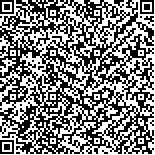| 引用本文: |
刘英姣,张泓.针刺联合康复训练对脑卒中后肩手综合征急性期患者的疗效研究[J].湖南中医药大学学报,2018,38(5):546-549[点击复制] |
|
| |
|
|
| 本文已被:浏览 2675次 下载 954次 |
| 针刺联合康复训练对脑卒中后肩手综合征急性期患者的疗效研究 |
| 刘英姣,张泓 |
| (湖南中医药大学, 湖南 长沙 410208;湖南省人民医院, 湖南 长沙 410002) |
| 摘要: |
| 目的 观察针刺联合康复训练治疗脑卒中后肩手综合征(shoulder-hand syndrome,SHS)急性期患者的临床疗效和意义。方法 将符合诊断和纳入标准的98例脑卒中后SHS患者随机分成观察组和对照组,每组49例。对照组采取常规治疗并配合康复训练,观察组在对照组的基础上采用针刺穴位疗法,观察治疗后的临床疗效,比较两组患者治疗前后的肩痛视觉模拟评分(visual analogue scale,VAS)、患侧手肿胀评定、上肢功能评定表评分(disabilities of the arm,shoulder and hand,DASH)和Fugl-Meyer评分(Fugl-Meyer assessment scale,FMA)。结果 治疗后,两组患者肩膀VAS评分、患侧手肿胀评分和DASH评分均较治疗前有所下降,FMA评分均较治疗前升高,差异有显著统计学意义(P<0.01),且观察组VAS评分、患侧手肿胀评分和DASH评分均低于对照组,FMA评分高于对照组,差异有统计学意义(P<0.05或P<0.01);观察组临床总有效率为83.7%,与对照组的73.5%比较,差异有统计学意义(P<0.05)。结论 针刺联合康复训练对脑卒中后肩手综合征急性期患者的疗效显著,显著改善患侧上肢运动功能,值得临床推广。 |
| 关键词: 脑卒中 肩手综合征 急性期 针刺 康复训练 VAS DASH FMA |
| DOI:10.3969/j.issn.1674-070X.2018.05.015 |
| 投稿时间:2018-02-14 |
| 基金项目:湖南省自然科学基金项目(2018JJ6104);长沙市科技局课题(ZD1702033)。 |
|
| Effect of Acupuncture Combined with Rehabilitation Training on Patients with Acute Shoulder-Hand Syndrome after Stroke |
| LIU Yingjiao,ZHANG Hong |
| (Hunan University of Chinese Medicine, Changsha, Hunan 410208, China;Hunan People's Hospital, Changsha, Hunan 410000, China) |
| Abstract: |
| Objective To observe the clinical effect and significance of acupuncture combined with rehabilitation training in the treatment of patients with shoulder-hand syndrome(SHS) after stroke. Methods 98 patients with SHS after stroke were randomly divided into the observation group and control group, with 49 cases in each group. The control group was received routine treatment and rehabilitation training, the observation group was given acupuncture therapy on the basis of control group. The clinical curative effect after treatment was observed. The visual analogue scale(VAS), ipsilateral hand swelling score, disabilities of the arm, shoulder and hand(DASH) and Fugl-Meyer assessment scale(FMA) in the two groups were compared. Results After treatment, the shoulder VAS score, ipsilateral hand swelling score and DASH score decreased after treatment, FMA scores were higher than that before treatment, the difference was statistically significant(P<0.01), and the VAS score, ipsilateral hand swelling acore and DASH score in the observation group were lower than the control group, FMA score after treatment was higher than the control group, the difference was statistically significant(P<0.05 or P<0.01). The total efficiency of the observation group was 83.7%, compared with 73.5% in the control group, the difference was statistically significant(P<0.05). Conclusion Acupuncture combined with rehabilitation training has a significant effect on patients with acute shoulder-hand syndrome after stroke, could significantly improve the motor function of the affected side of the upper limb, which is worthy of clinical promotion. |
| Key words: cerebral apoplexy shoulder-hand syndrome acute stage acupuncture rehabilitation training VAS DASH FMA |
|

二维码(扫一下试试看!) |
|
|
|
|




